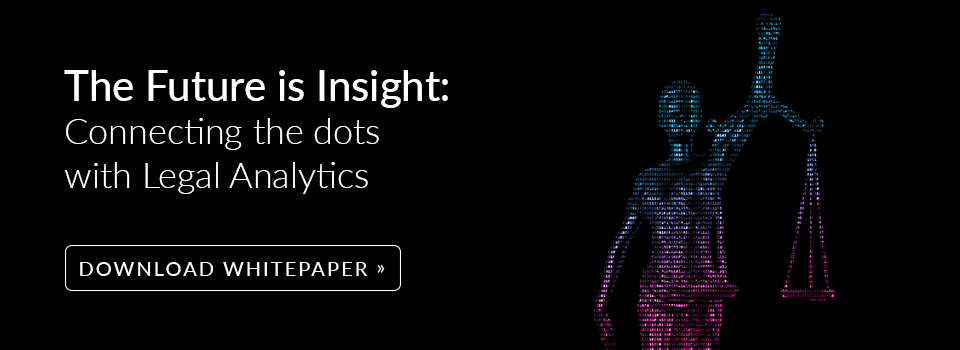AI in law firms— a game changer in legal practice?

This article is an extract from the Lawyers and Robots whitepaper. Click here to download the whitepaper.
While the most forward thinking law firms are ready to embrace artificial intelligence (AI), robots are not taking over the legal world any time soon. That said, its utilisation is undoubtedly proving valuable for law firms who are investing in it.
We talked to Isabel Parker, Director of legal services innovation at Freshfields Bruckhaus Deringer and Charles Kerrigan, Partner at Olswang about the latest developments.
How have you seen technology change the way your law firm works?
Isabel Parker observes that the last 18 months to two years have seen ‘significant change within the sector in general and Freshfields in particular’. She explains:
‘Rapid changes to our clients’ businesses in every sector, many driven by technology, have compelled us to look at a number of different technologies and solutions, both to enable us to deliver greater efficiencies to our clients and to improve our internal organisation and access to know-how.’
AI can perform tasks which save the average associate solicitor hours in billable time—such as automating the drafting of lengthy commercial contracts, and undertaking due diligence and other time saving processes—allowing them to get on with the important legal work.
While such innovative breakthroughs in AI are groundbreaking in today’s legal context, new technologies quickly become the indispensable norm.
So how has technology changed the way lawyers work—and how will it continue to change?
Charles Kerrigan says while we have useful updates in technology from the last few years, ‘it isn’t yet game-changing stuff—but dashboards, process maps, analytic tools for transaction and bill management have all improved our processes’. He highlights electronic signatures and similar products that he believes have been a huge success, citing time and cost savings already experienced by clients of Olswang.
‘Adoption is increasing and the time and money saved in signing processes is huge. I’d expect electronic signing to be the usual way of signing large transactions within a few years. Issues relating to deeds, the Land Registry and other practicalities will be solved. This shows how well things can work if we identify the right tasks involving manipulating and transferring data. Smart contracts appear to be in a different bucket at the moment but we’ll see their adoption in simple trades, and then in ISDA-type contracts where master agreements provide optionality with fewer variables than other types of contract. From there comes blockchain technology. We should be looking at who will produce these contracts. If it isn’t law firms it will be someone else.’
Freshfields exemplifies how the legal sector can embrace AI to its full advantage.
Parker explains: ‘we have a new function dedicated to legal services innovation, comprising lawyers, legal technologists, continuous improvement professionals and project management capability’.
The firm is currently focusing on five main areas:
- The use of AI for contract analysis
- The use of technology assisted review (TAR) to conduct document review in a litigation or global investigations context
- Creation of ‘smart apps’—using expert logic either to create internal efficiencies or to deliver advice to clients in digital format
- Smart document generation, and
- Smart knowledge management
Parker says:
‘Using AI for contract analysis is a new way of working and has required a lot of thought. TAR is an umbrella term for a number of technology solutions for organising and analysing very large unstructured data sets in a litigation/ investigations context. The data sets can run to many millions of documents. TAR is changing the way we approach litigation or investigations for a client—in all but the most sensitive cases, ‘eyes on’ review is not the default approach for document review. Clients expect us to leverage technology to deliver in the most cost effective way, which will always involve some level of TAR. Freshfields uses TAR, in one form or another, as standard to reduce costs and reduce risk.’
While the use of AI is proving a slow but certain gamechanger in legal practice, what’s clear is that legal practice—and clients—will always need the human touch.
The firm is also looking at using expert systems to create more agile databases and potentially to develop new client facing product lines. Expert systems, explains Parker, are a type of AI which use software to emulate the decision-making ability of a human expert using simple logical rules which are then applied to a knowledge base to deduce new facts. Expert logic is the technology that underpins many ‘information as a legal service’ offerings. She adds:
‘We are currently using expert logic software to automate a very manual and labour-intensive part of the multi-jurisdictional filing process for ACT. We are building an app to perform multi-jurisdictional filing analyses by checking thresholds across 230 jurisdictions globally, streamlining a process that is currently performed manually by a junior associate.’
Freshfields is also looking to use smart document generation to drive efficiency and de-risk document drafting. She explains that smart document generation will enable the production of a high quality tailored first draft much more quickly and accurately— meaning lawyers can concentrate on more nuanced drafting and negotiation.
Smart document generation will enable the production of a high quality tailored first draft much more quickly and accurately—meaning lawyers can concentrate on more nuanced drafting and negotiation.
What are the cost implications of AI for law firms?
Kerrigan says that while there is a view that technology is expensive, ‘law firms still spend around five percent of their budgets on IT, and that hasn’t changed in some time’. He questions whether this means more than this is actually being spent on all the new opportunities, or there is less to invest in than we think, or that there is scope for more investment. He suggests that if it’s possible for all of these things to be true at the same time—then that is the conclusion we should reach.
Budgetary constraints are not the only challenges. While the likes of Freshfields are not limited financially to the extent smaller law firms may be, Parker highlights other challenges Freshfields are facing:
‘Freshfields’ information security regulations are among the most stringent of all law firms. Consequently, use of cloud software as a service has been a challenge for us. We have had to work hard with our Information Security team and with third party providers to achieve the right balance that allows us to be agile while respecting at all times the confidentiality and security of our clients’ data.’
This challenge will continue, says Parker, with the introduction of the General Data Protection Regulation in May 2018. She says the firm has therefore had to establish ‘very close relationships with the vendors we select’—many of which have changed their data policies to make them more robust as a result of the firm’s feedback.
There won’t be robots sitting at banks of desks where the human lawyers are now. Specific AI is intelligence to perform particular tasks.
So is AI the way to go for law firms?
Kerrigan, a big believer in AI, says, ‘the really good technology which is imminent is artificial intelligence. In AI, there’s a distinction between general and specific AI. Artificial general intelligence involves robots thinking, feeling and joining in like people. No one thinks we’re near there yet, so there won’t be robots sitting at banks of desks where the human lawyers are now. Specific AI is intelligence to perform particular tasks and this is a reality in many industries. The advance here is a result of developments in natural language processing and machine learning. This gets us closer to robots performing or assisting on some lawyers’ tasks.’
The question for lawyers, he says, is how can we understand AI well enough to know how it will best be applied? As AI relies on knowing what you want to measure, and having data to be able to do so, he is unconvinced that practicing lawyers can answer these points yet. Though data analytics is ‘the most promising offshoot of this for lawyers’, he says:
‘I’m interested in data visualisation as an aid to clients understanding transaction structures, documents and parties’ responsibilities. Part of a lawyer’s role is now to be a communicator—clients want to be given clear information. Many of them like graphics when these are well presented and fairly show the right information—AI is certainly good at these type of tasks.’
Kerrigan cites one of the benefits of the attention lawyers are now paying to AI is the fact that it opens up interest in ways of working more generally, and while ‘we’ll go down some blind alleys, overall, I expect we’ll see improvements’.
Parker says it is unquestionable that these tech advances have been beneficial. She says, ‘we are seeing high levels of efficiency gains through the use of the firm’s provider for general corporate M&A due diligence and other contract analysis. We are confident that smart document generation will substantially derisk the drafting process. Smart search technology is revolutionising the way we access our know-how and will allow us to derive greater market and sector insights for our clients.’
She adds:
‘Our clients always come first, and the rise in digital technology is having a profound effect on clients in each of our sectors. Technology is transforming the way customers consume services and allowing new entrants into the market, forcing clients to rethink their operating models.’
The shift towards utilising technology to drive innovation is undoubtedly going to continue, and Parker highlights the forces driving the exponential growth in new technology:
‘The rise of cloud software as a service (making new technology much more affordable and accessible), big data (which can be ‘mined’ to improve client service and performance through, for instance, AI) and open sourcing.’
Parker believes that as these forces continue to democratise access to new technologies and facilitate the production of new service lines and products, clients in all sectors will be compelled to change the way they operate—and the legal services sector is no exception.
What does the future hold?
Parker believes that the successful law firms of the future will be those embracing technology and over the next five–ten years, we can expect to see an increasing amount of ‘traditional’ legal work being automated.
She says:
‘Clients (and recruits) of the future will expect a top tier legal firm to be technology enabled and its lawyers to be confident in working with legal technology. Clients will expect closer collaboration, aided by technology and will be unwilling to pay hourly rates for any legal process that could be automated.’
While the use of AI is proving a slow but certain game changer in legal practice, what’s clear is that legal practice—and clients—will always need the human touch.
Clients will expect closer collaboration, aided by technology and will be unwilling to pay hourly rates for any legal process that could be automated.
 LexisNexis
LexisNexis
